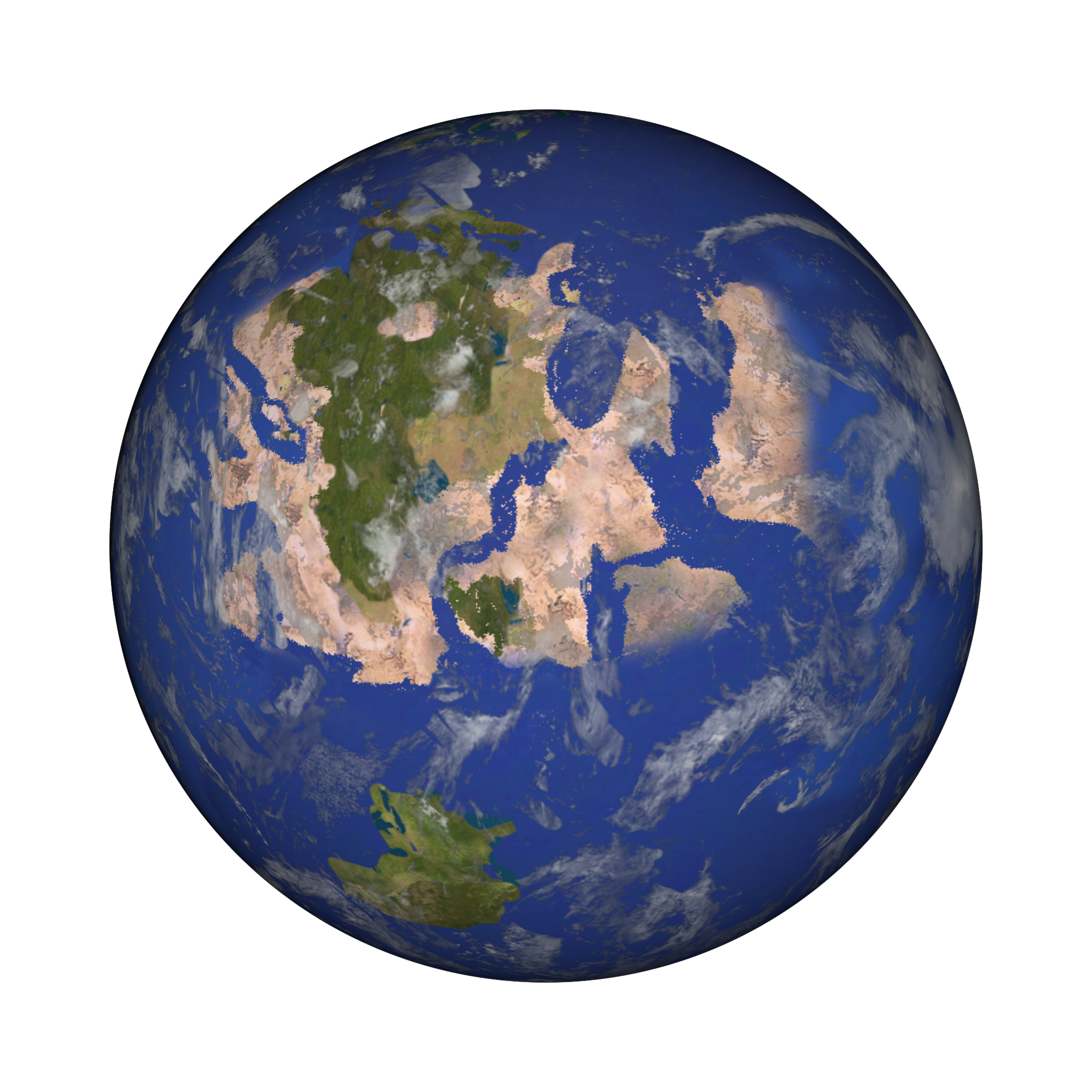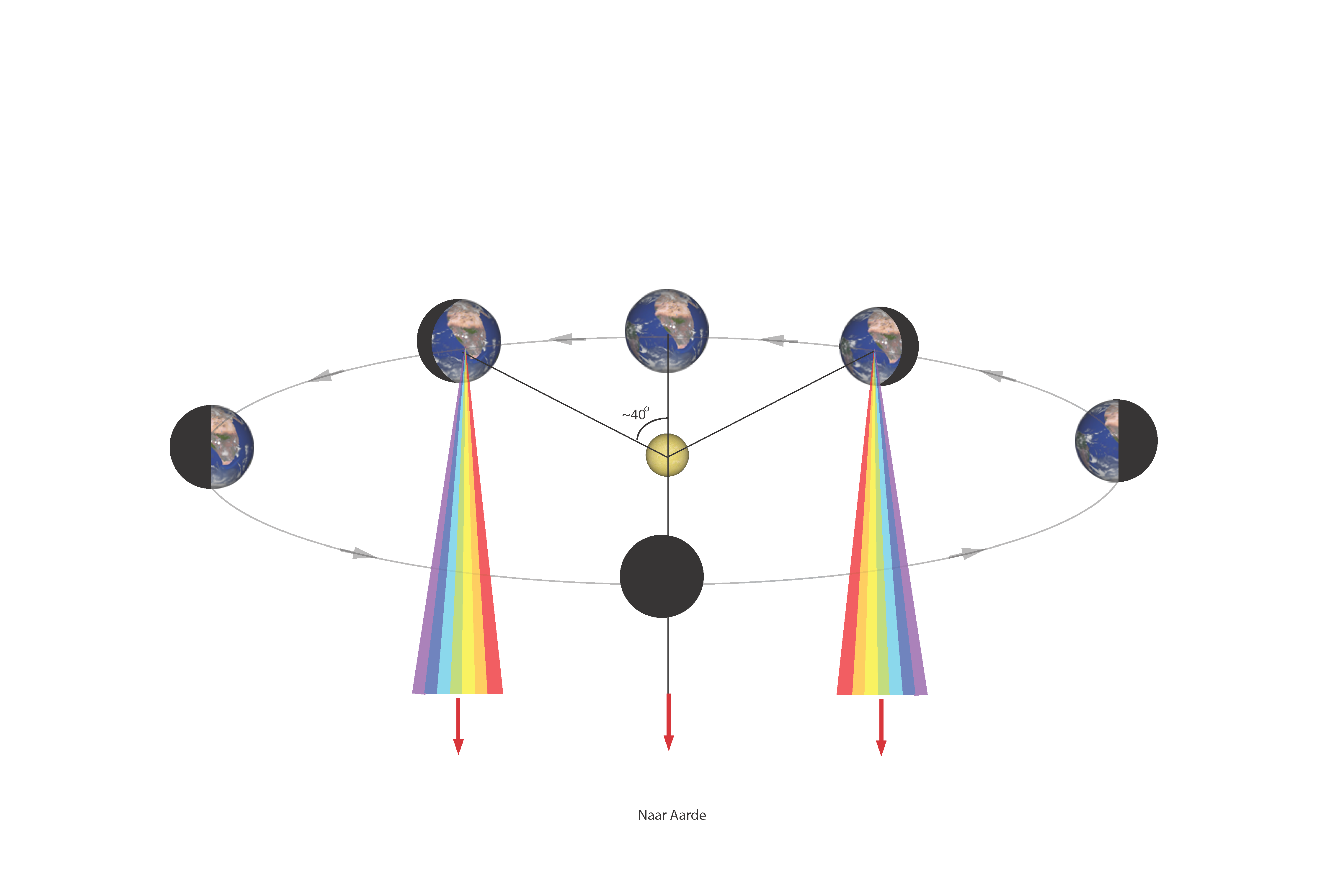
Planetary researchers from SRON Netherlands Institute for Space Research and the University of Amsterdam have calculated that an exoplanet with water clouds reflects starlight that can be very strongly polarized. This ‘rainbow signal‘ can be used to recognize water clouds. Clouds of water droplets in the planet’s atmosphere enormously increase the chances of liquid water being present on the planet’s surface and therefore the chance of life as well.
An exoplanet is a planet that does not orbit around our sun but around another star. Since 1995 more than 800 exoplanets have been discovered. However the distances to exoplanets are so large that for the majority of exoplanets we only know the size and the distance to their star. To determine the appearance of an exoplanet we need to measure the starlight it reflects. Large telescopes such as the future European Extremely Large Telescope (E-ELT) in Chile are needed for this as well a special measurement techniques.

Polarization
With a computer model the planetary researchers have calculated that exoplanets with water clouds polarize reflected starlight particularly strongly at certain points in their orbit. Polarization is a characteristic of light: unpolarized light consists of vibrations in random directions whereas in polarized light the vibrations have a preferred direction. The calculated increase in polarization by cloud-covered exoplanets is a characteristic of the rainbow that appears on earth when sunlight falls on water droplets in a rain shower: the droplets disperse the light in all directions but in particular at an angle of about 140 degrees.
What we do not see with our eyes is that rainbow light, as well as being colored, is also strongly polarized: if you look at a rainbow though a polarization filter (e.g. a lens from Polaroid glasses) and you rotate the filter then you can see the clarity of the rainbow changing. The water droplets that make up clouds on earth are about 100 times smaller than raindrops. Consequently we do not see a colored rainbow in sunlight that has been dispersed by clouds. However with a polarization filter we can still see particularly strongly polarized light at a scattering angle of about 140 degrees.
Water clouds
It had previously been suggested that we could recognize water clouds on exoplanets from their polarized rainbow signal. However, the results now published also demonstrate that this signal can be seen even if only a small part of the planet is covered by water clouds and even if the water clouds are partly hidden behind ice clouds, as is the case on earth. The researchers calculated this by using a model of the earth with a cloud coverage such as that measured by the MODIS instrument on the AURA satellite (NASA).
SRON planet researcher Theodora Karalidi, first author of an article in the Journal Astronomy & Astrophysics (A&A): ‘According to our calculations, alien planetary researchers could discover that the earth has water clouds and therefore possibly surface water and so perhaps even life. However they would need to do polarization measurements to discover this!’
Publication
The team of planetary researchers who made the discovery are Theodora Karalidi and Daphne Stam (both SRON Netherlands Institute for Space Research) and Joop Hovenier (University of Amsterdam). The research paper‘Looking for the rainbow on exoplanets covered by liquid and icy water clouds’ was published today in Astronomy & Astrophysics.


